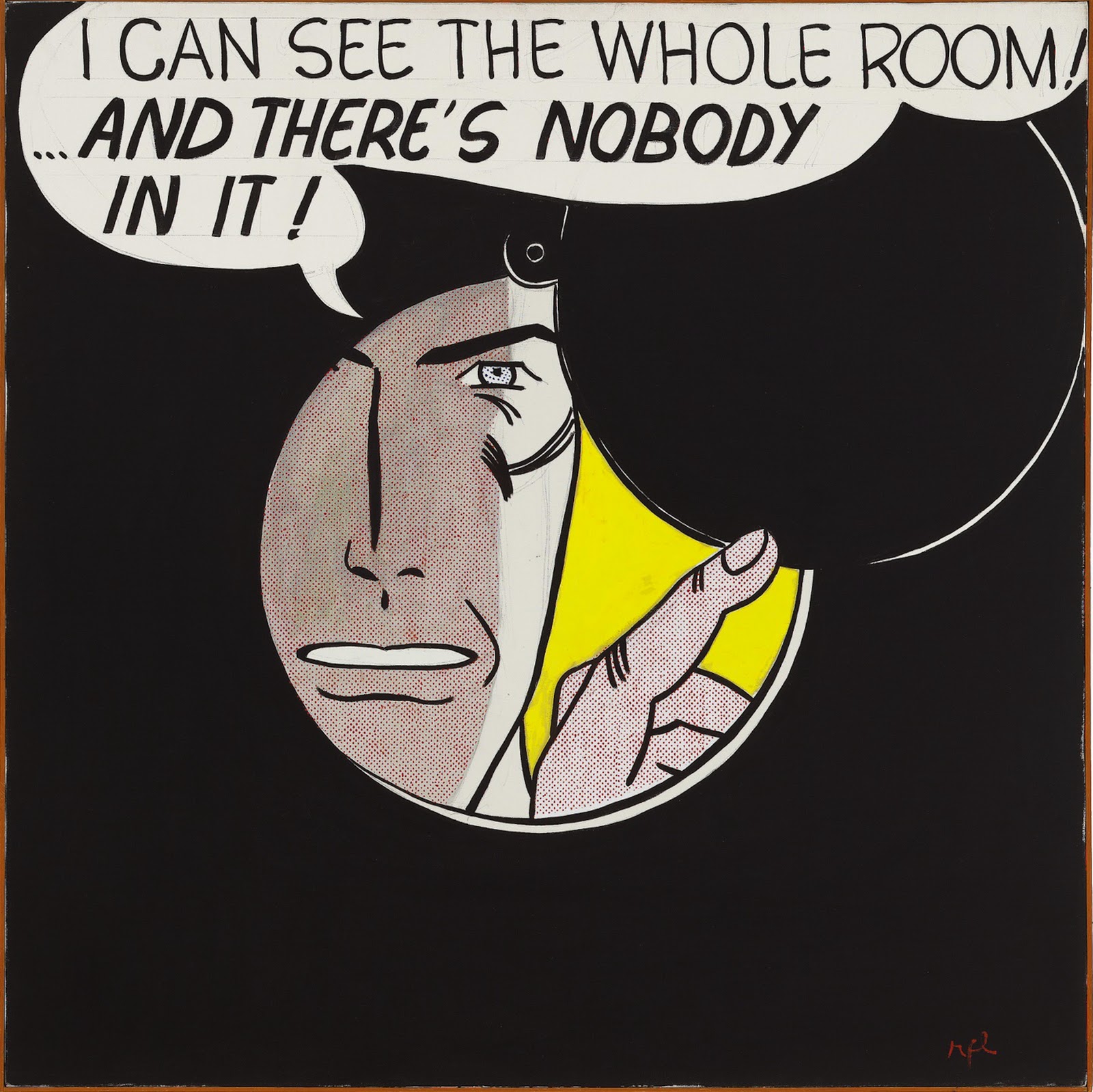The article published on the website of the newspaper the Guardian on 23 February, 2013 is headlined Roy Lichtenstein: from heresy to visionary. The article reports the information about an American pop artist Roy Lichtenstein, who by blending high and low art, tested the contradictions at the heart of our ideas about art.
Roy Fox Lichtenstein was born on 27 October 1923, and raised inNew York City , the son of affluent middle-class parents. Surrounded by the art modern of the 1930s, influenced by the geometrical, modernist world of art deco and futurism, Lichtenstein also loved the superheroes of radio and film serials, and the popular music of his day, especially jazz.
It shoked the society, but in November 2011, Roy Lichtenstein's 1961 'I Can see the Whole Room...and There's Nobody in It!' was sold by Christie's for $43.2 million.
Roy Fox Lichtenstein was born on 27 October 1923, and raised in
It shoked the society, but in November 2011, Roy Lichtenstein's 1961 'I Can see the Whole Room...and There's Nobody in It!' was sold by Christie's for $43.2 million.
The painting depicts a large black square, out of which a circle has been cut. From behind the circle peers the face of a jutting-jawed comic-strip man, illuminated by a bright backboard of yellow. He is looking through a peephole, at the viewer; above him a dialoge bubble declares that he can see no one in the room where we, presumably, are standing.
Lichtenstein created his works in a genre of abstract expressionism. Lichtenstein is just as willing to efface the image, and its maker, as his audience:in his 1978 Self-Portrait, he puts a blank mirror where the artist's head should be.
There are indications that during his life Lichtenstein wasn't poular ar all. But after his death far-seeing connoisseurs recognized something new and exciting, and immediately began collecting him. Lichtenstein's paintings are far more technically demanding than it seems at first glance. He used a lot of careful techniques of handwork (drawing, tracing, painting, emphasizing brushstroke, line) with the reproduction and screening of found images.
It is necessary to emphasize that Lichtenstein's art is too lovable: too accessible, commercial, art "lite" for the merely acquisitive. Along with the other pop artists, Lichtenstein helped to suggest that any representation is mediated, emphasizing new ways of seeing in the age of the industrialized image.
In conclusion the author suggests that Lichtenstein's works are about perception and environment: apertures and camera shutters, peepholes and voyeurism, frame and screens define the way we view our surroundings.
His works aren't about form, they are about seeing. All his life he was excited about seeing things and now our task is to appreciare hs paintigs, try to understand his abstract concepts in popular culture.
Lichtenstein created his works in a genre of abstract expressionism. Lichtenstein is just as willing to efface the image, and its maker, as his audience:in his 1978 Self-Portrait, he puts a blank mirror where the artist's head should be.
There are indications that during his life Lichtenstein wasn't poular ar all. But after his death far-seeing connoisseurs recognized something new and exciting, and immediately began collecting him. Lichtenstein's paintings are far more technically demanding than it seems at first glance. He used a lot of careful techniques of handwork (drawing, tracing, painting, emphasizing brushstroke, line) with the reproduction and screening of found images.
It is necessary to emphasize that Lichtenstein's art is too lovable: too accessible, commercial, art "lite" for the merely acquisitive. Along with the other pop artists, Lichtenstein helped to suggest that any representation is mediated, emphasizing new ways of seeing in the age of the industrialized image.
In conclusion the author suggests that Lichtenstein's works are about perception and environment: apertures and camera shutters, peepholes and voyeurism, frame and screens define the way we view our surroundings.
His works aren't about form, they are about seeing. All his life he was excited about seeing things and now our task is to appreciare hs paintigs, try to understand his abstract concepts in popular culture.

Good!
ОтветитьУдалитьSlips:
...the Guardian on February 23, 2013...
...about THE American pop artist Roy Lichtenstein...
...to appreciaTe hIs paintiNgs..